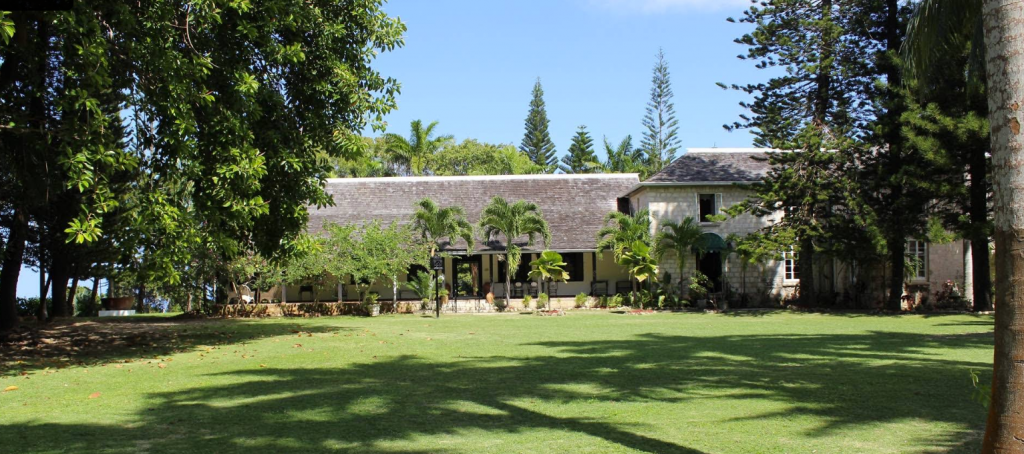Cinnamon Hill Great House
Though construction began in 1734, the Cinnamon Hill great house, located in Jamaica's St. James Parish, wasn't completed until half a century later in 1784. Located on the hill behind the Cinnamon Hill sugar works, the house was built to stand against the dual threats of insurrection and hurricanes, its structure featuring an ocean-facing concrete butress called a "cutwind" that not only protected the house against the intense winds of the stormy season but included holes through which muskets could be shot. Economically associated with the Barrett family's Cornwall estate, Cinnamon Hill is consistently noted as producing sugar, rum, coffee, and pimento, with the occasional inclusion of cattle and land rental. The precise number of enslaved people on the estate varies, with some years as low as 230 or as high as 573. Like Greenwood Great House and Barrett Hall, Cinnamon Hill was spared during the Baptist War. It passed out of Barrett family ownership in 1887, having been bought by landowner George Robertson, and was subsequently occupied by several families throughout the 20th century, including American country singer Johnny Cash and his wife, who lived there until his death in 2003.
Cinnamon Hill Great House, present day.
Coordinates
Longitude: -77.813166200000

